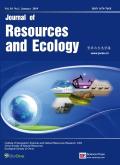Effect of Traditional Village Landscape Genes on Tourists' Image Construction: Case Study of Zhangguying Village
Q3 Environmental Science
引用次数: 1
Abstract
Abstract: Landscape genes and destination image are important concepts in the traditional village tourist destination research. Clarifying their relationship is of great significance for understanding tourists' behavioral characteristics at traditional village sites and promoting the sustainable development of traditional village tourism. This study analyzes the relationship between landscape genes and tourists' image construction in Zhangguying Village. It uses a structural equation model to identify and extract traditional village landscape genes used in tourists' image construction, based on the “cognitive-affective-overall” framework. The results show that: (1) Traditional village landscape genes play important but varying roles in tourists' image construction. The “丰”-shaped zigzag structure architectural gene plays the most important role in tourists' cognitive image construction followed by the filial piety and family style cultural gene and the “回”-shaped courtyard layout gene. The “dragon”-shaped mountain layout environmental gene has the least important role. (2) The mediation effect analysis reveals that tourists' cognitive images mediate the relationship between landscape genes and overall image construction, while cognitive and affective images mediate the relationship between landscape genes and overall images. (3) The multicluster analysis reveals that the results significantly differ according to tourists' gender, age, number of trips, and place of permanent residence. The findings enrich the traditional village landscape image research and promote the sustainable development of traditional village tourism through the practices of cultural landscape protection and inheritance.传统村落景观基因对游客形象构建的影响:张谷英村案例研究
摘要:景观基因和目的地形象是传统村落旅游目的地研究的重要概念。厘清它们之间的关系对于了解游客在传统村落旅游地的行为特征、促进传统村落旅游的可持续发展具有重要意义。本研究分析了张谷英村景观基因与游客形象建构之间的关系。研究基于 "认知-情感-整体 "框架,运用结构方程模型识别并提取了游客形象建构中的传统村落景观基因。结果表明(1) 传统村落景观基因在游客形象建构中发挥着重要但不同的作用。丰 "字形结构建筑基因在游客认知形象建构中的作用最大,其次是孝道家风文化基因和 "回 "字形院落布局基因。而 "龙 "形山体布局环境基因的作用最小。(2)中介效应分析表明,游客的认知形象中介了景观基因与整体形象建构之间的关系,而认知形象和情感形象则中介了景观基因与整体形象之间的关系。(3) 多聚类分析显示,游客的性别、年龄、旅行次数和常住地不同,结果也有显著差异。研究结果丰富了传统村落景观形象研究,并通过文化景观保护与传承实践促进了传统村落旅游的可持续发展。
本文章由计算机程序翻译,如有差异,请以英文原文为准。
求助全文
约1分钟内获得全文
求助全文
来源期刊

Journal of Resources and Ecology
Environmental Science-Ecology
CiteScore
2.40
自引率
0.00%
发文量
107
 求助内容:
求助内容: 应助结果提醒方式:
应助结果提醒方式:


